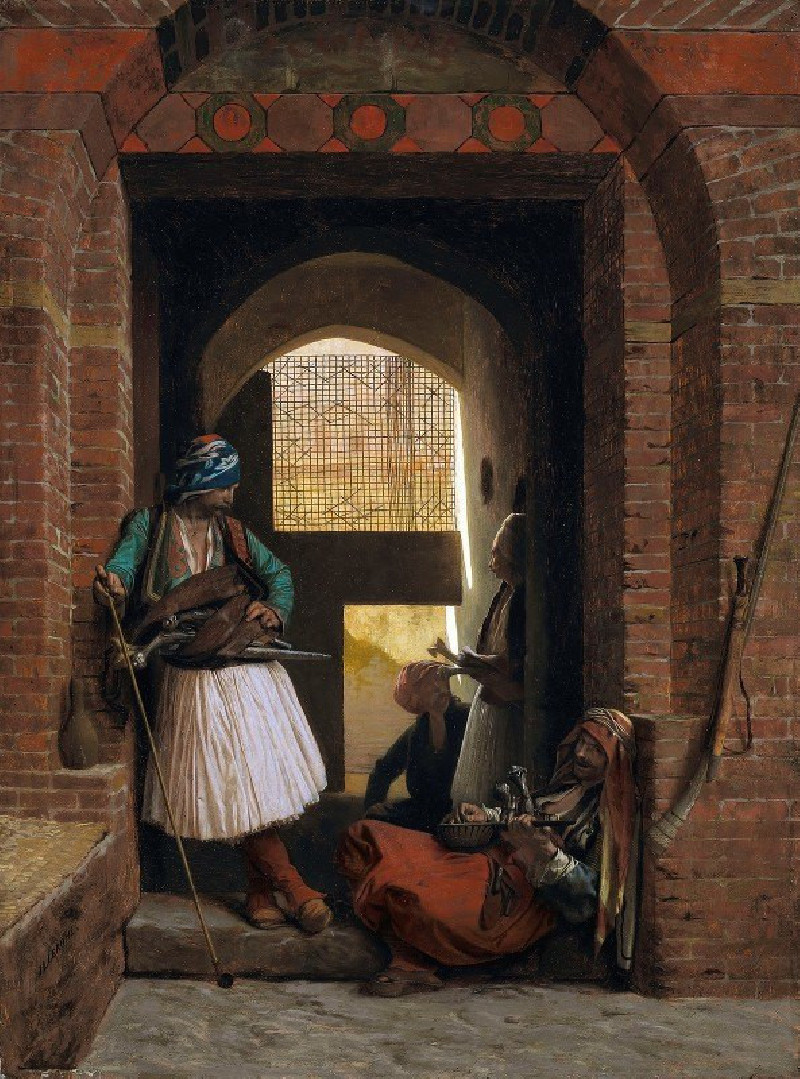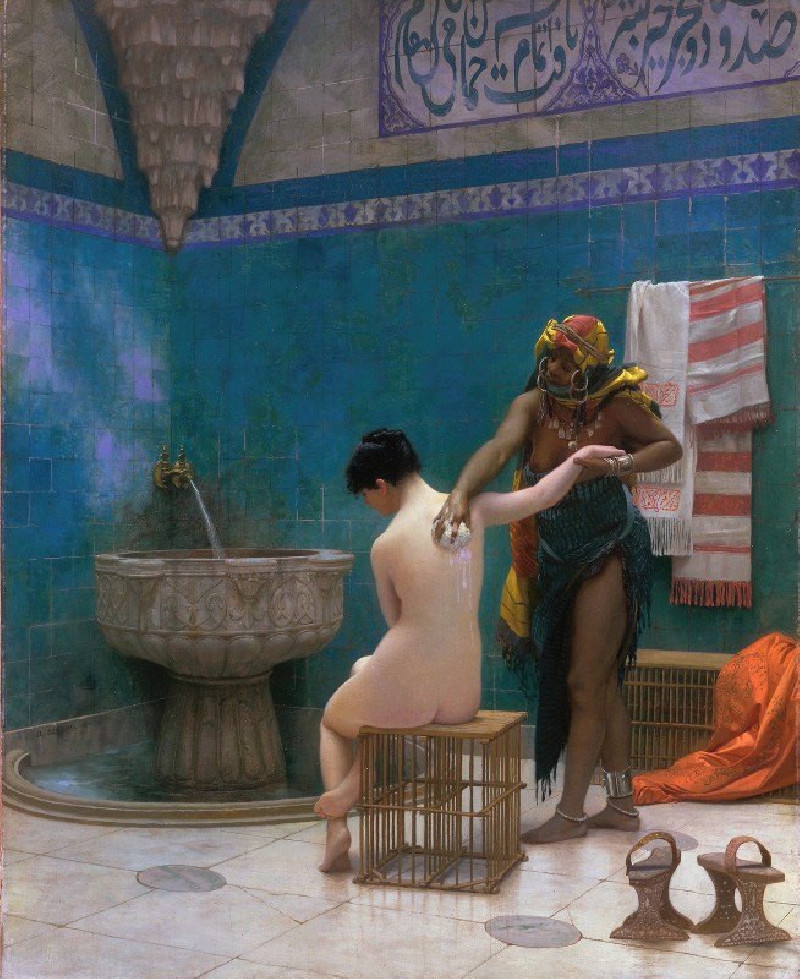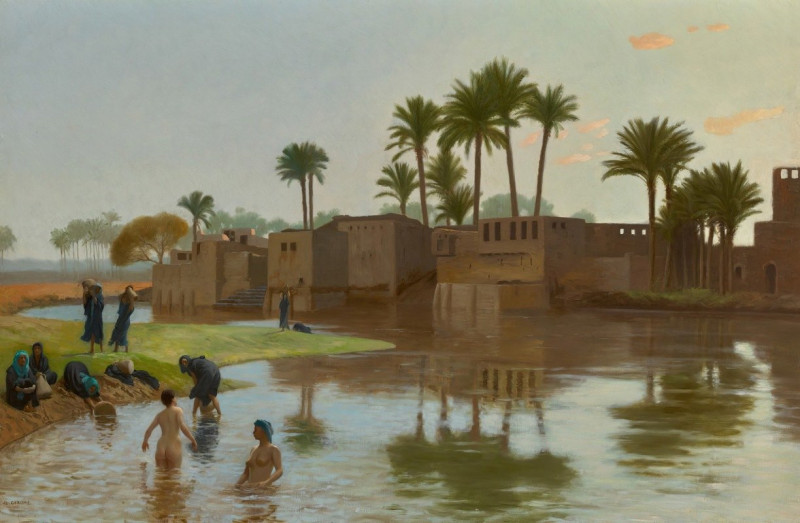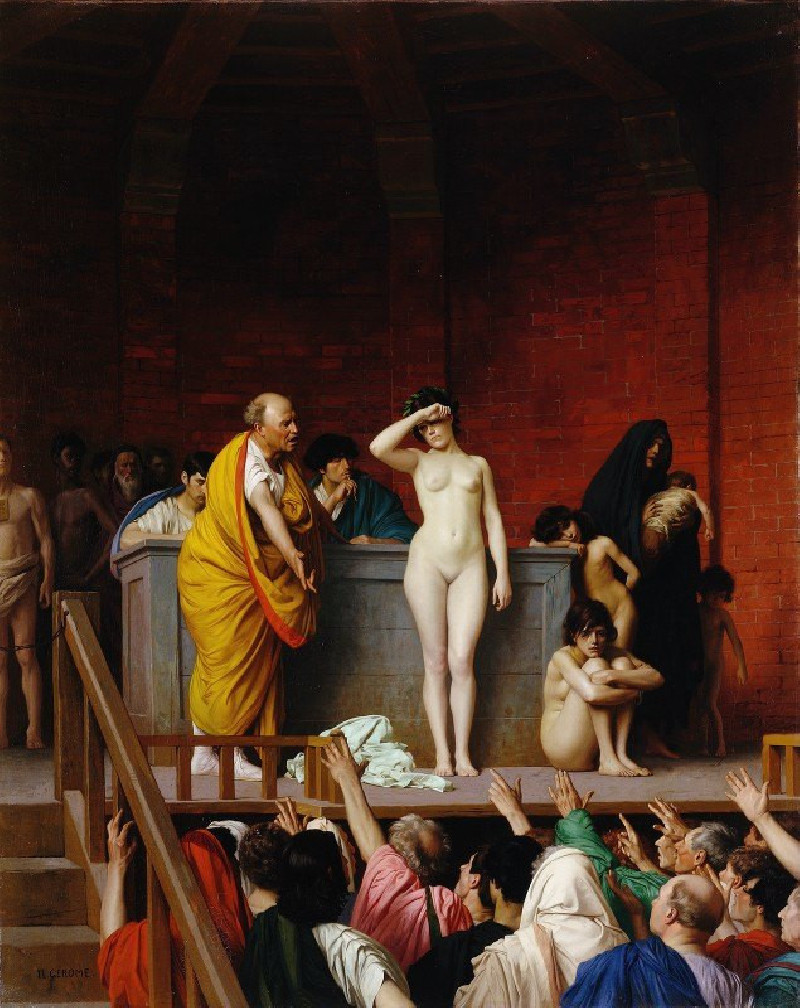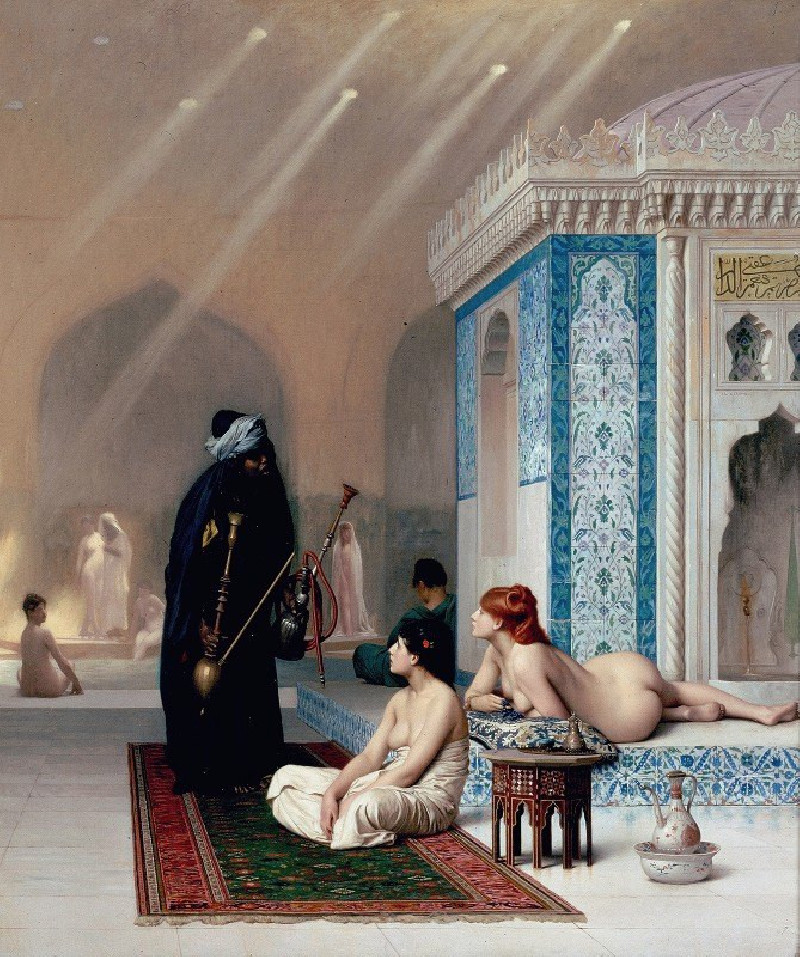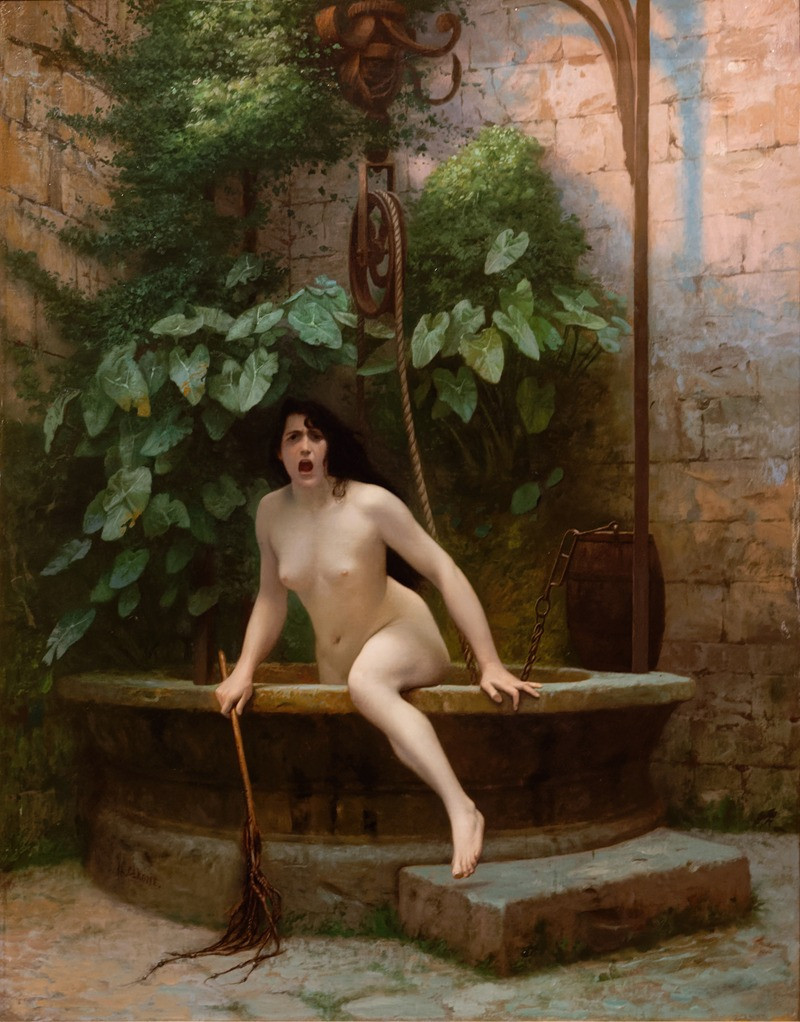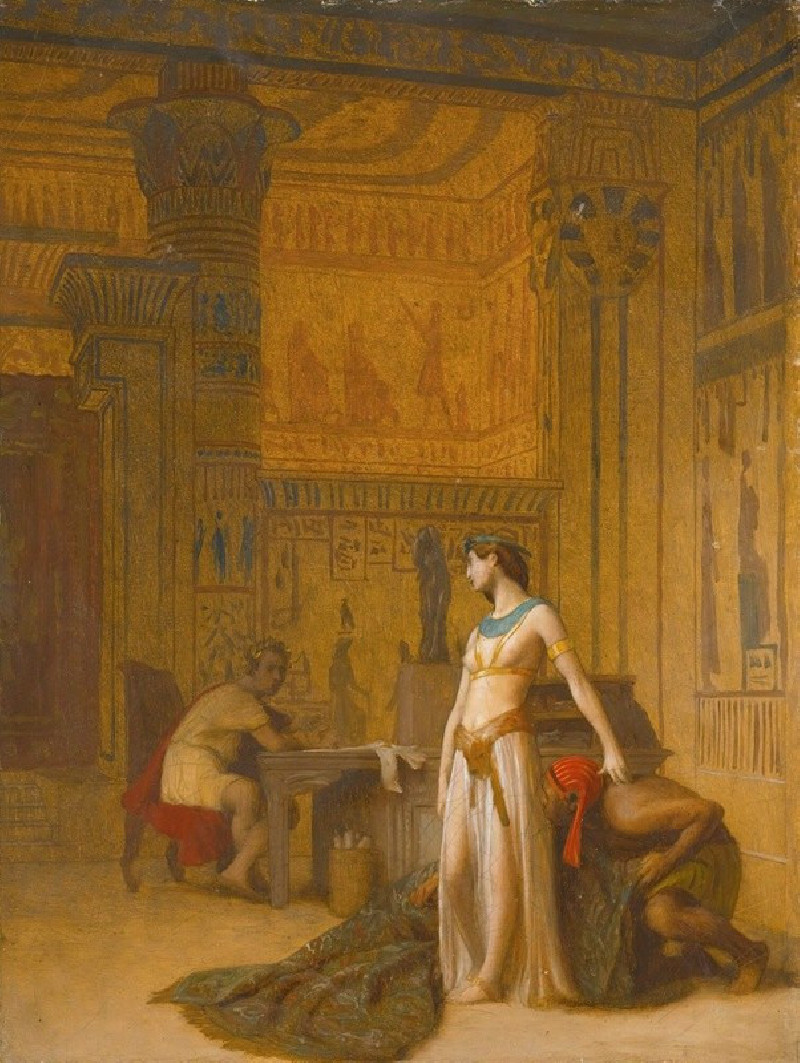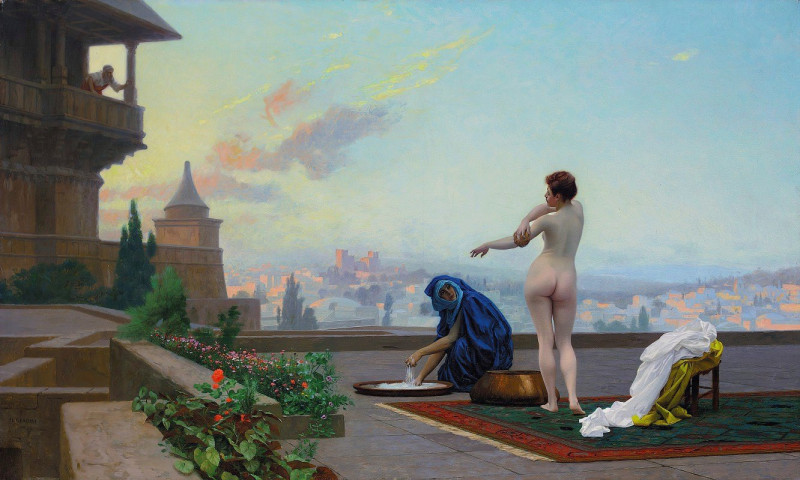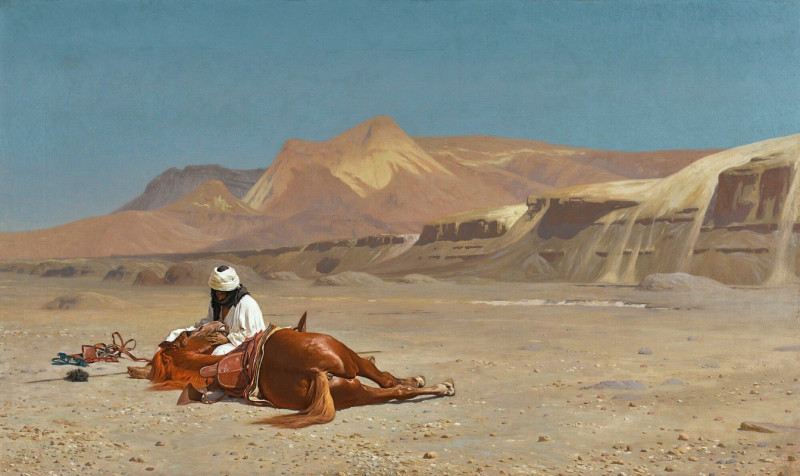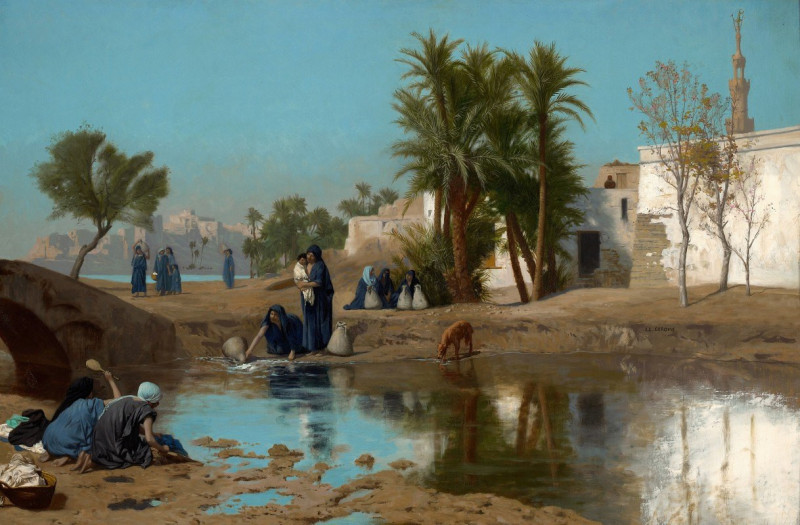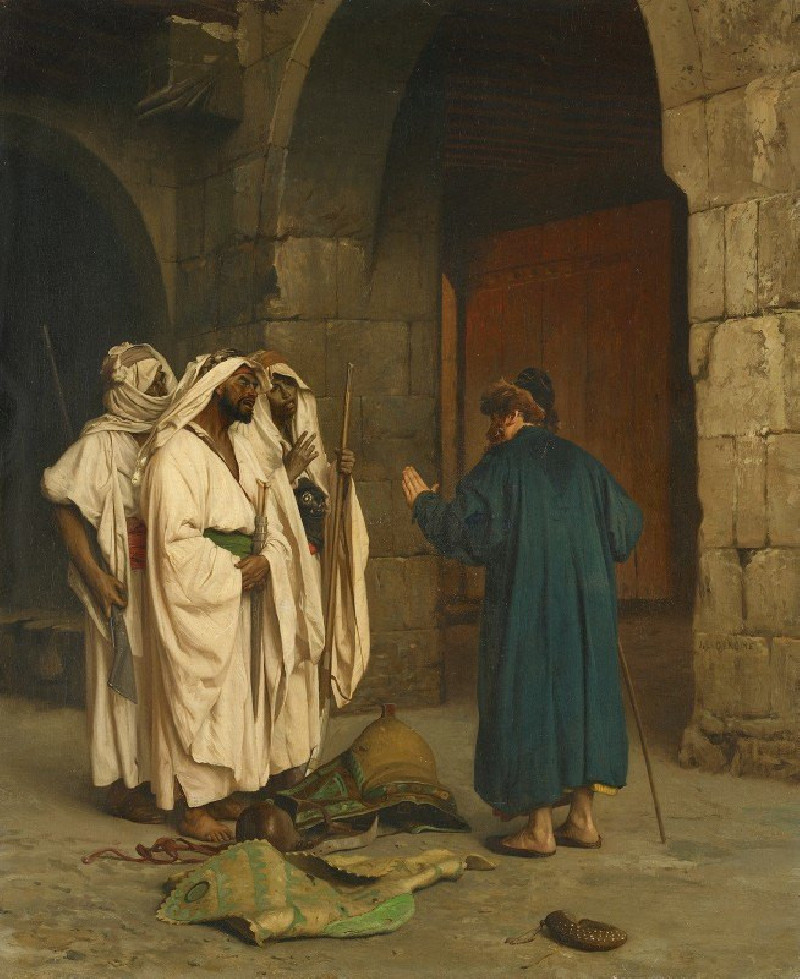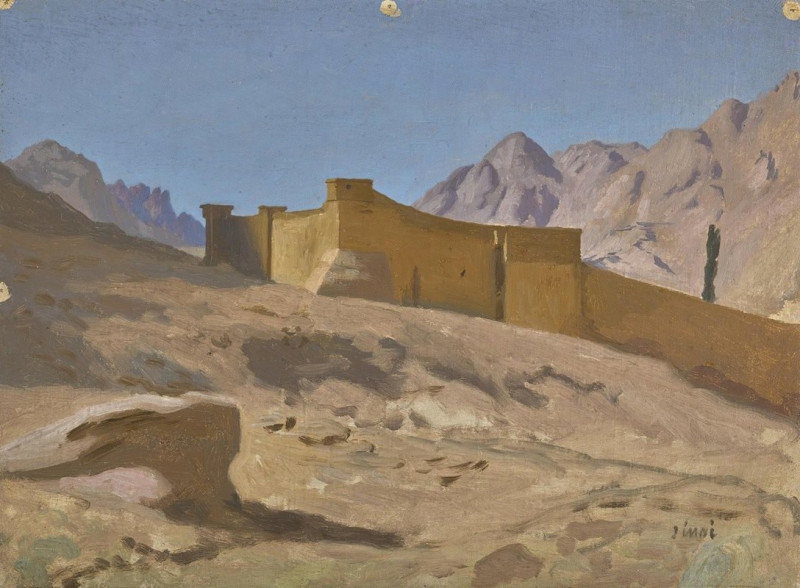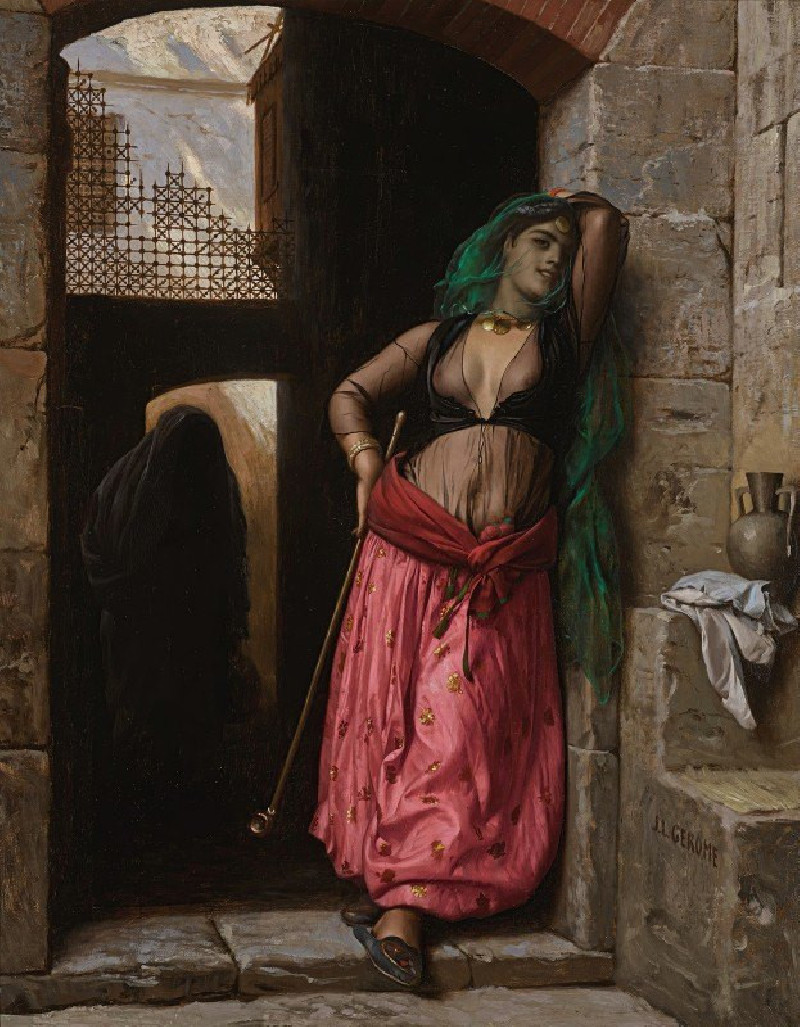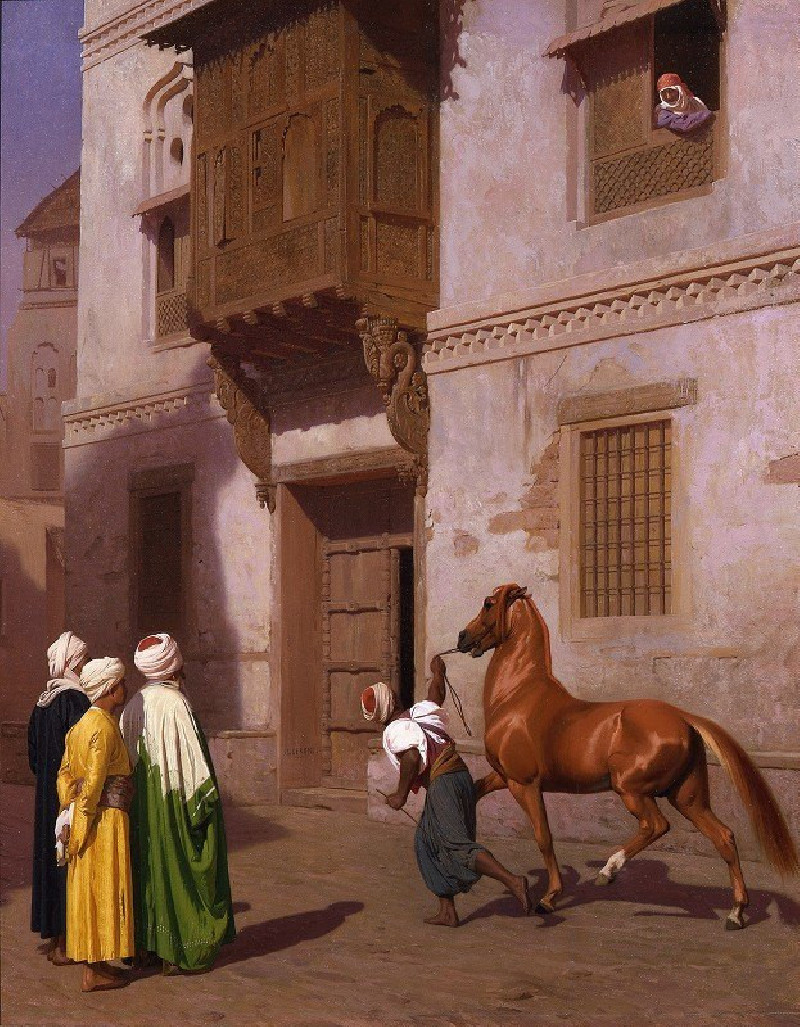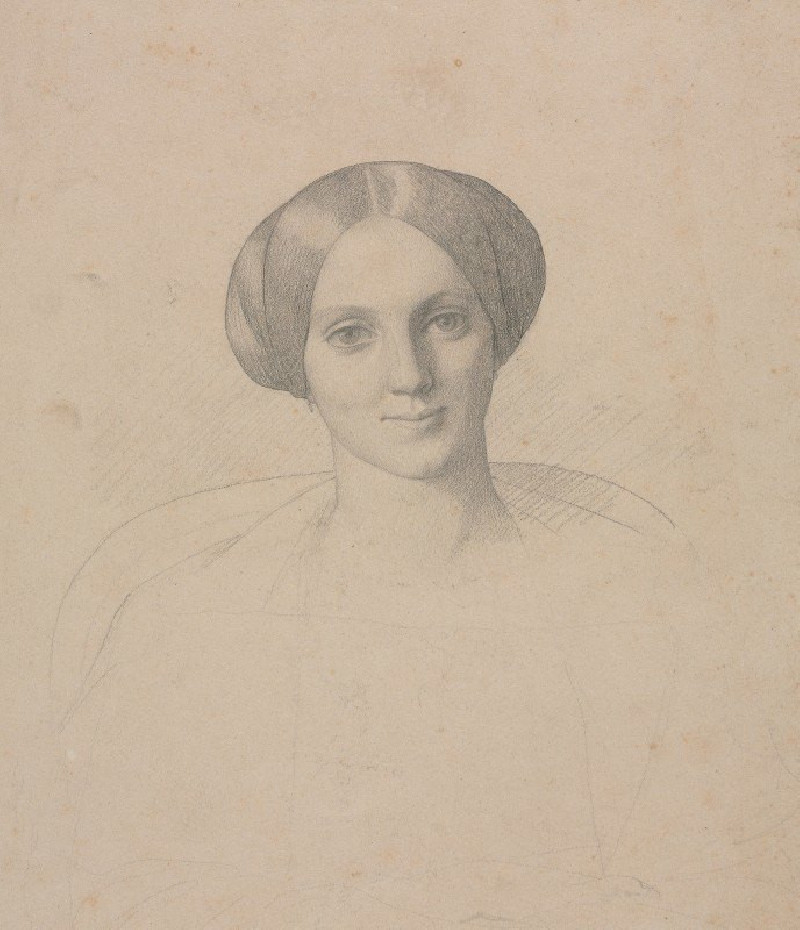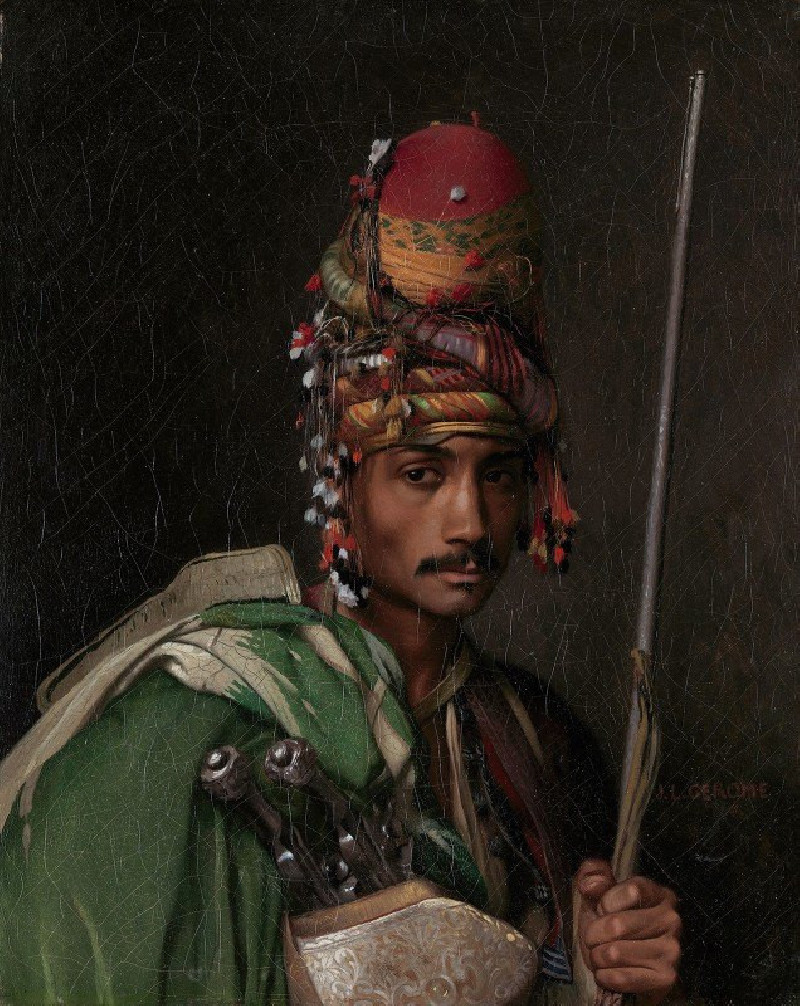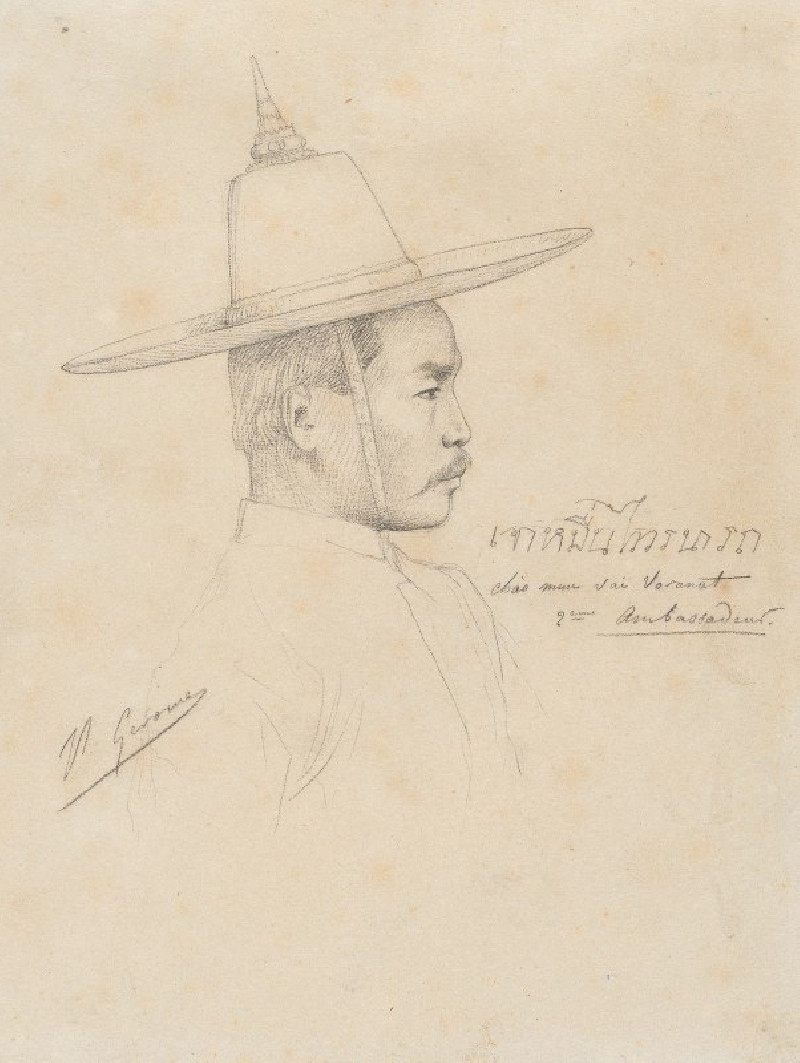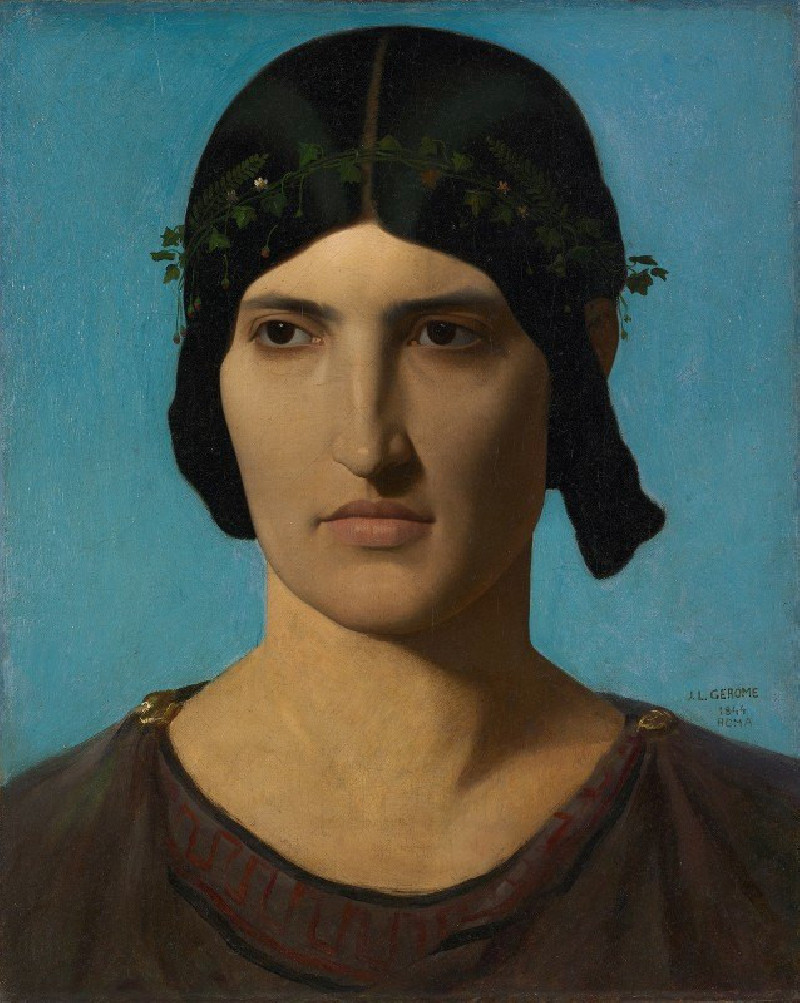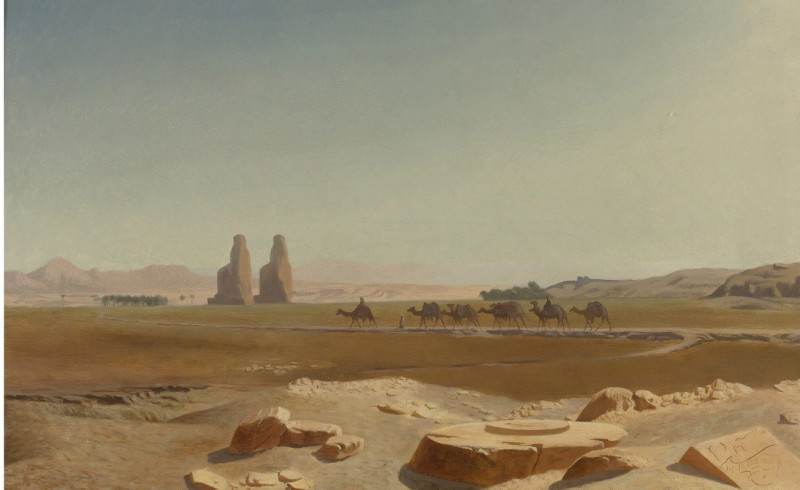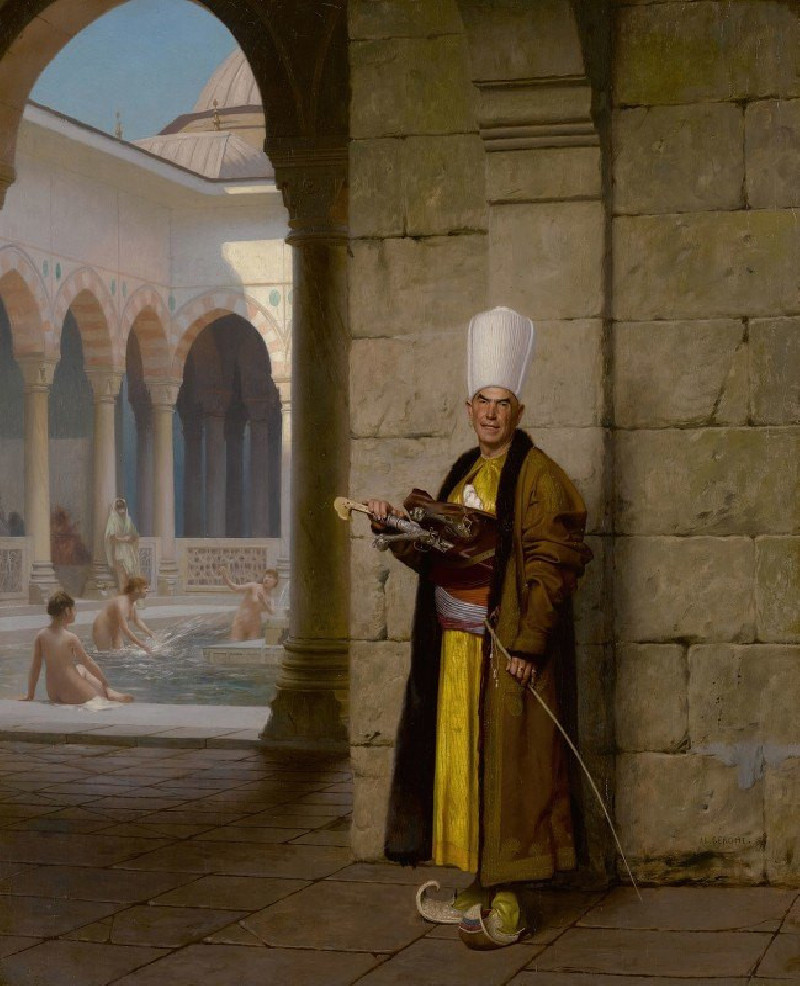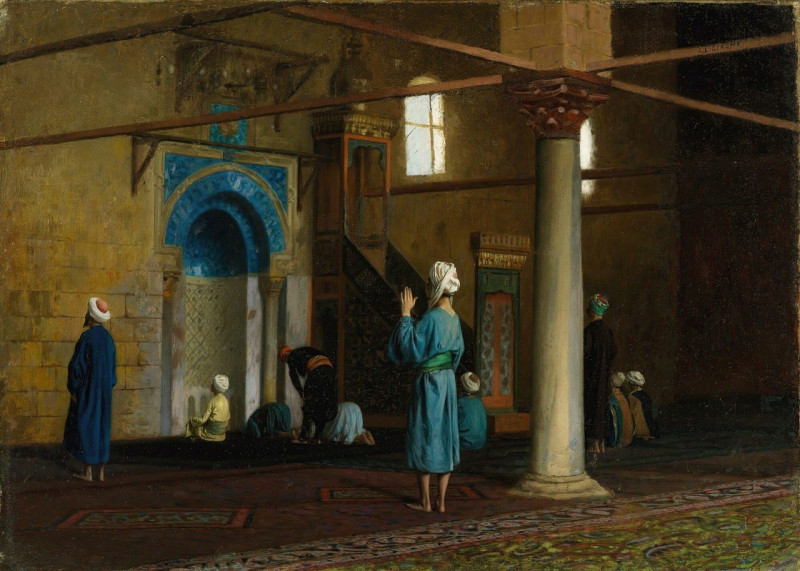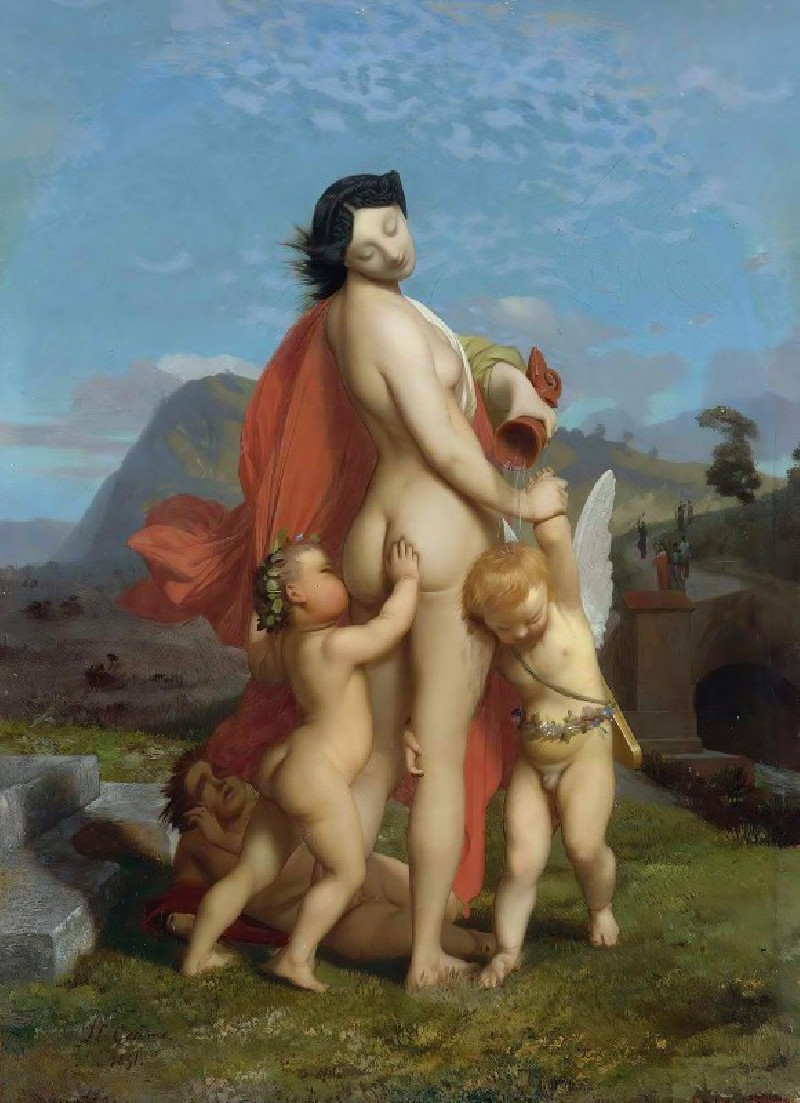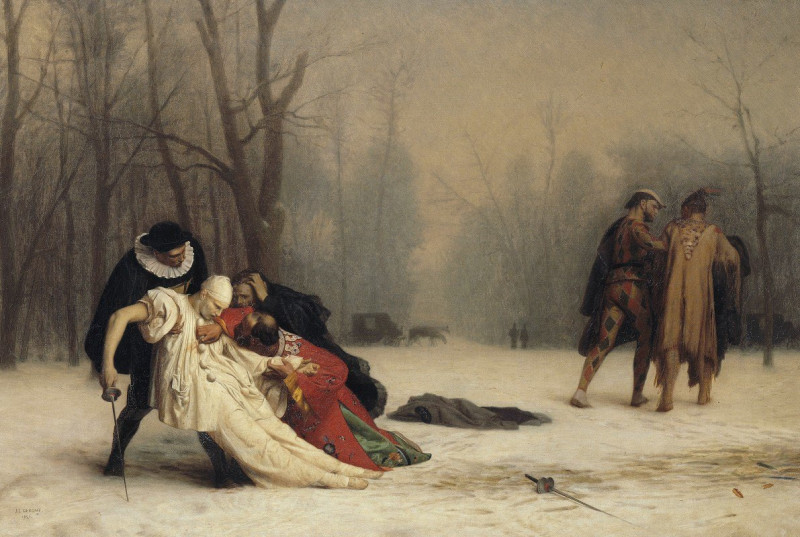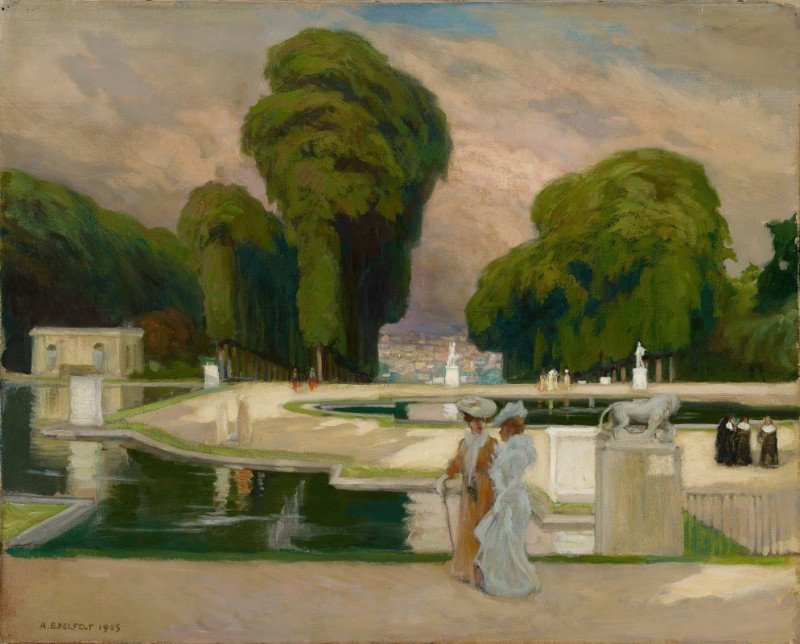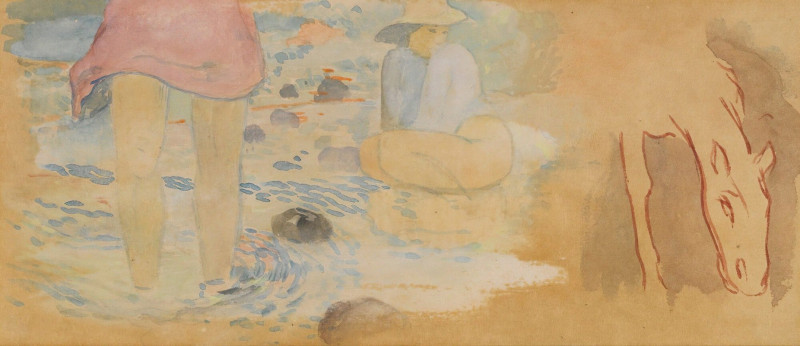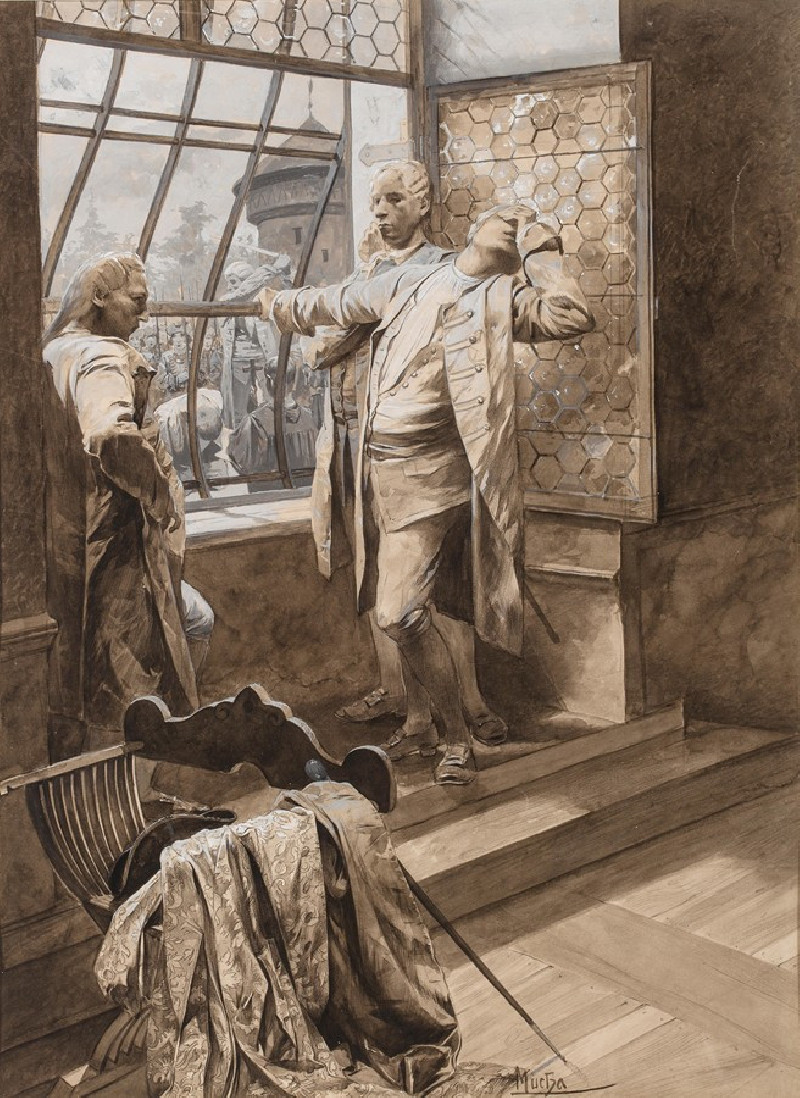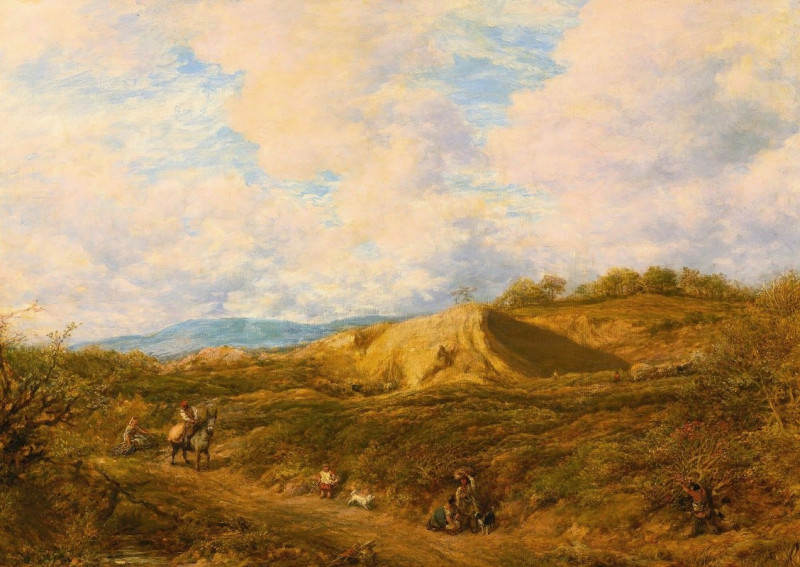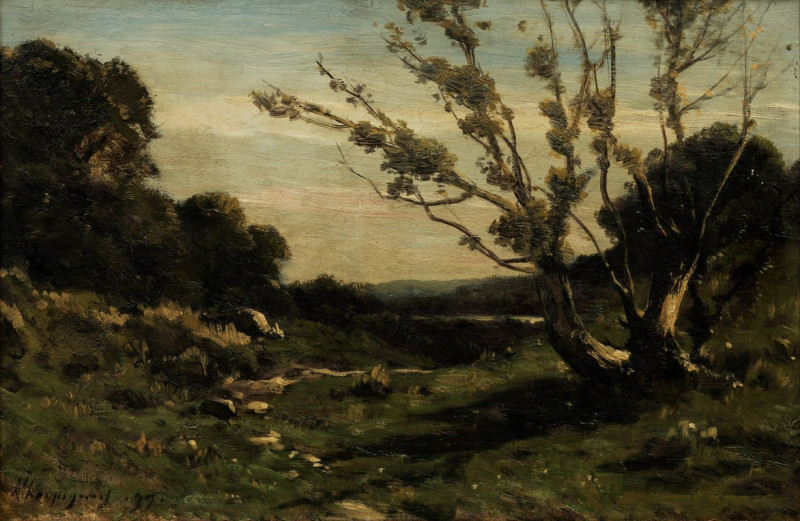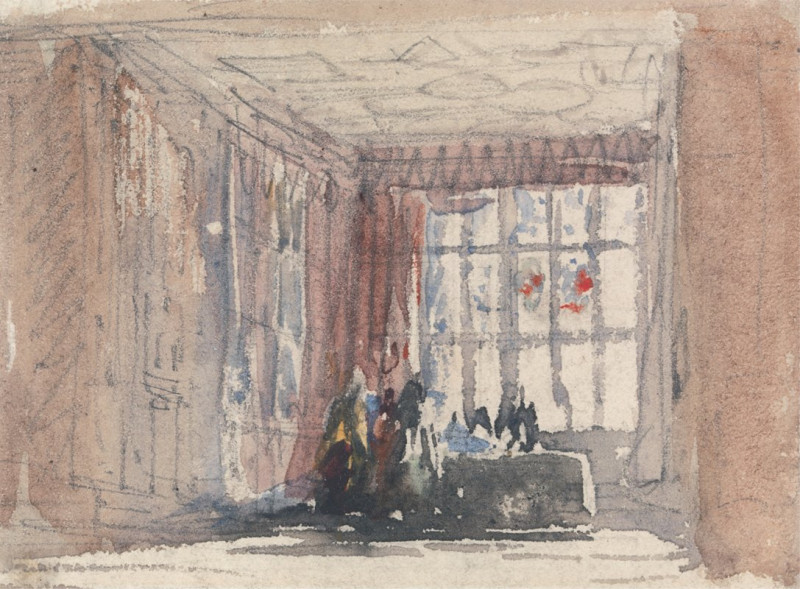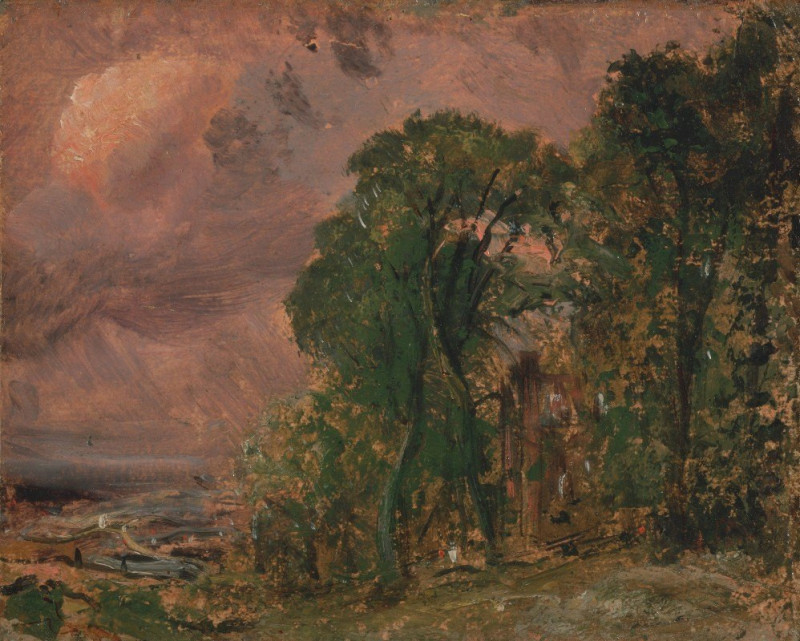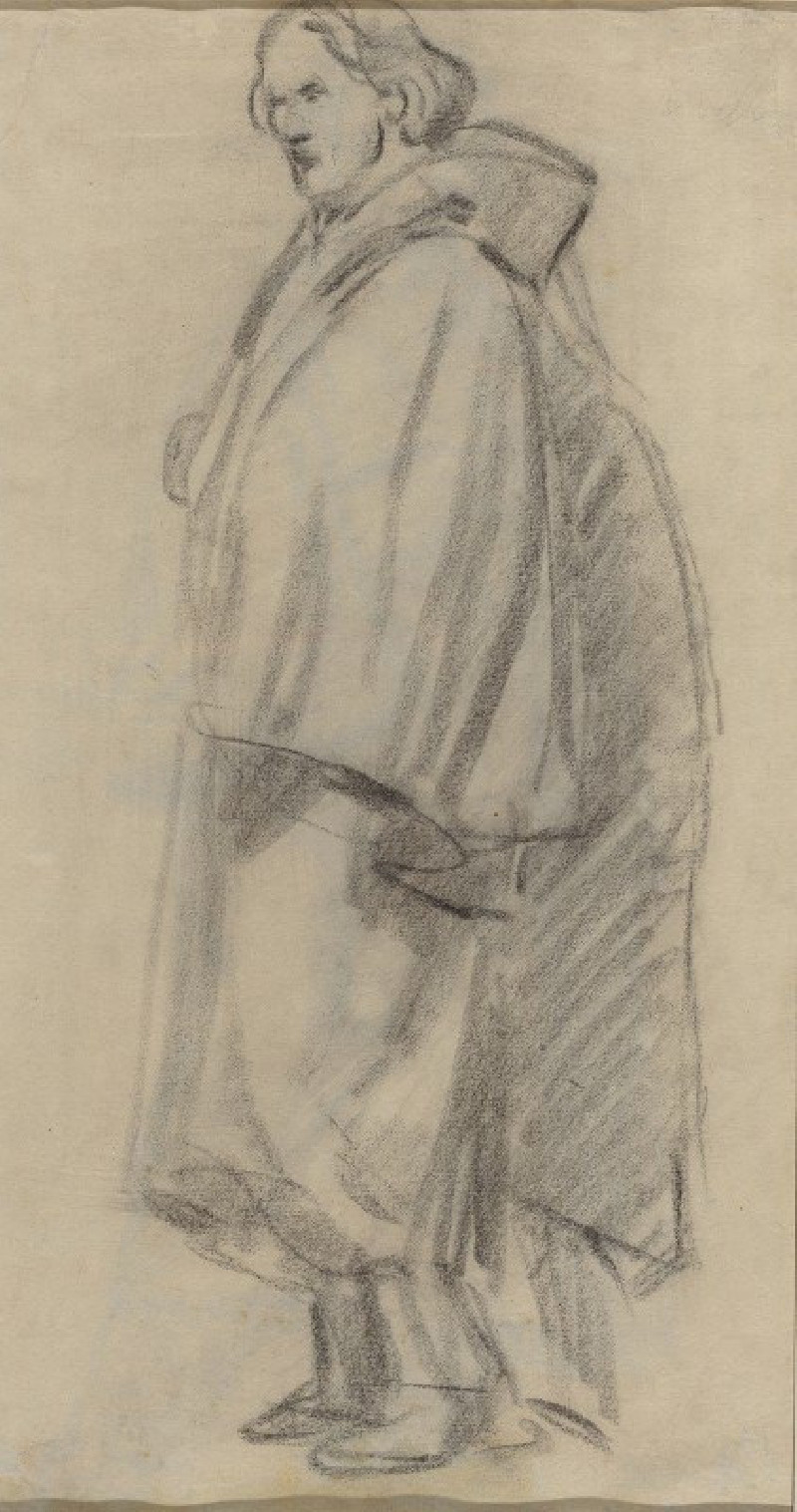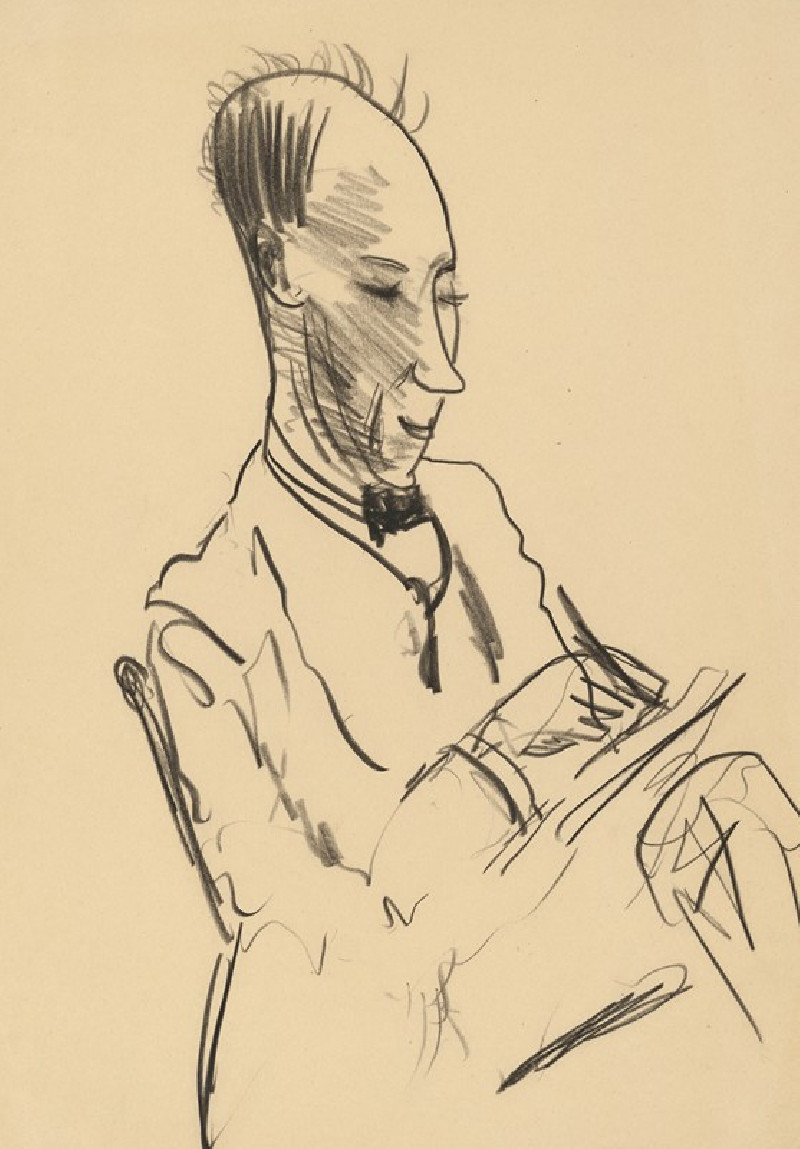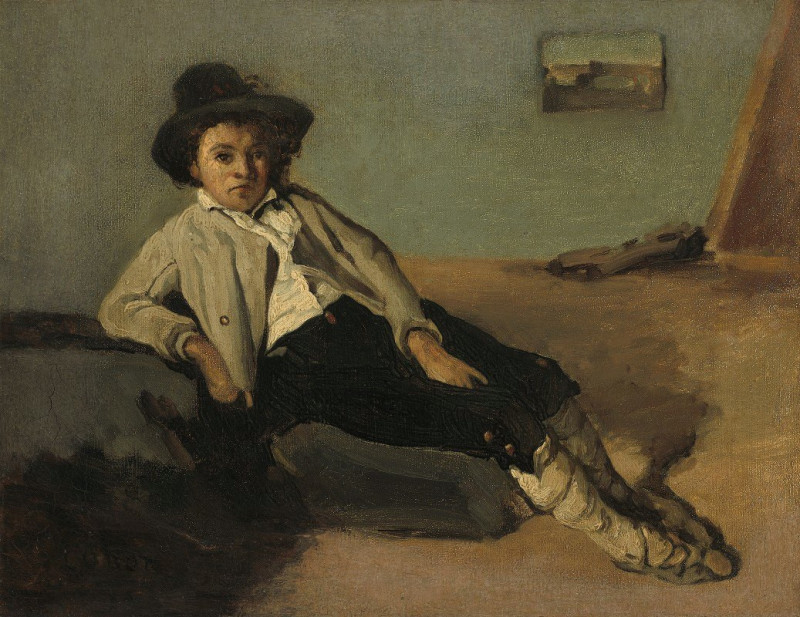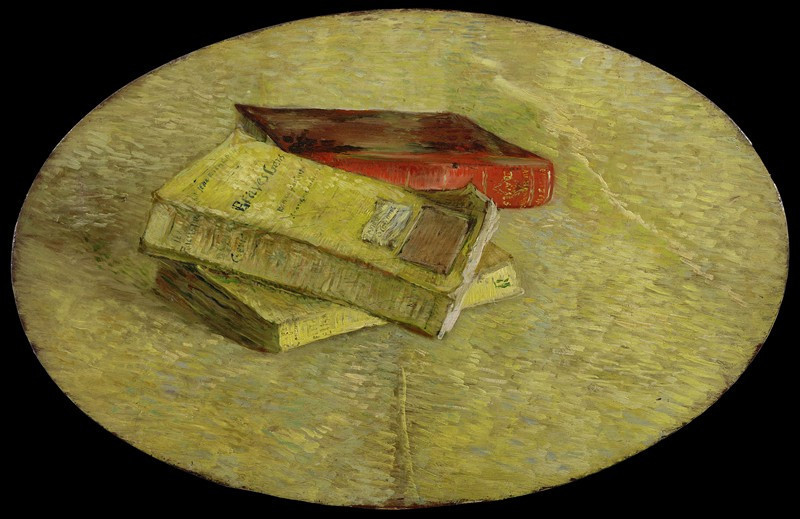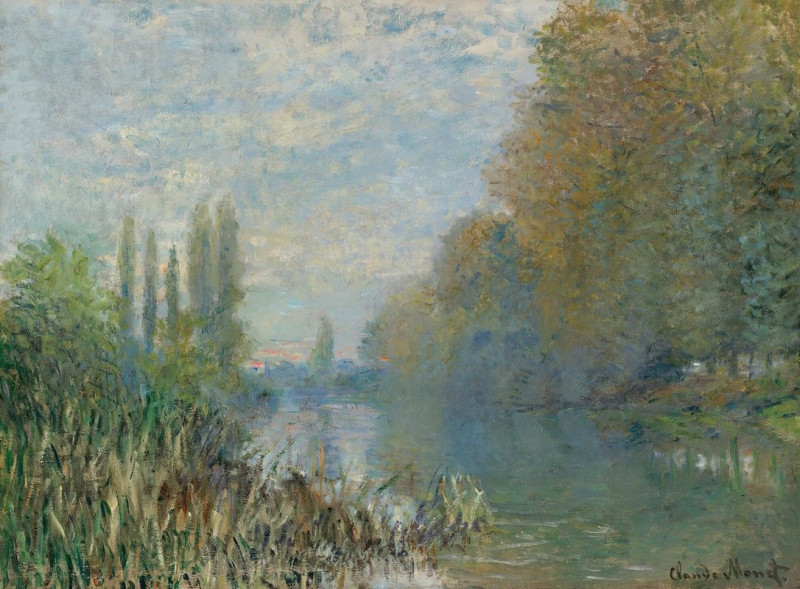Corps de garde d’arnautes au Caire (1861.)
Technique: Giclée quality print
Recommended by our customers
More about this artwork
Jean-Léon Gérôme, a master of 19th-century French academic painting, invites us to step back in time with his vivid work "Corps de garde d’arnautes au Caire" (1861). Set in the heart of Cairo, this painting is a striking portrayal of life in a guarded entryway.The scene captures a moment of daily life under the gaze of a standing guard poised beside the archway. Clad in vibrant traditional attire, his expression is contemplative, possibly reflecting on the day’s duties or simply observing the activities around him. Seated to his right, an elderly man with a serene demeanor is engrossed in smoking, while a younger figure, possibly a peddler, continues his dealings, adding a bustling economic element to the scene.Gérôme's use of architectural elements is especially notable. The brickwork of the doorway and the rough texture of the walls are rendered with meticulous detail, contrasting dynamically with the soft human figures and their colorful garments. The rich, earthy tones of the architecture highlight the bright colors of the costumes, drawing the viewer’s eye across the painting. The light streaming through the large barred window bathes the interior in a warm glow, emphasizing the interaction of light and shadow, and enhancing the overall depth of the scene.With "Corps de garde d’arnautes au Caire," Gérôme not only showcases his technical skill but also his ability to narrate a story through the canvas, capturing the essence of a place and its people with historical accuracy and emotional resonance.
Delivery
Returns
Jean-Léon Gérôme was a French painter and sculptor in the style now known as academicism. His paintings were so widely reproduced that he was "arguably the world's most famous living artist by 1880." The range of his oeuvre included historical painting, Greek mythology, Orientalism, portraits, and other subjects, bringing the academic painting tradition to an artistic climax. He is considered one of the most important painters from this academic period. He was also a teacher with a long list of students.

